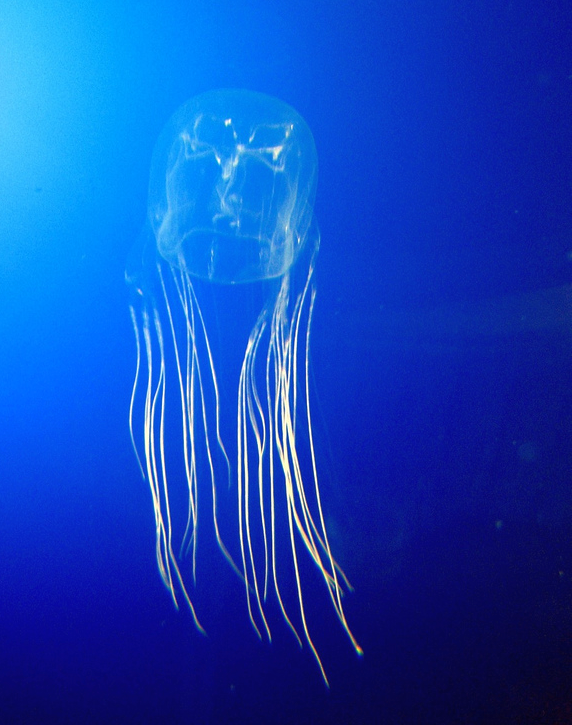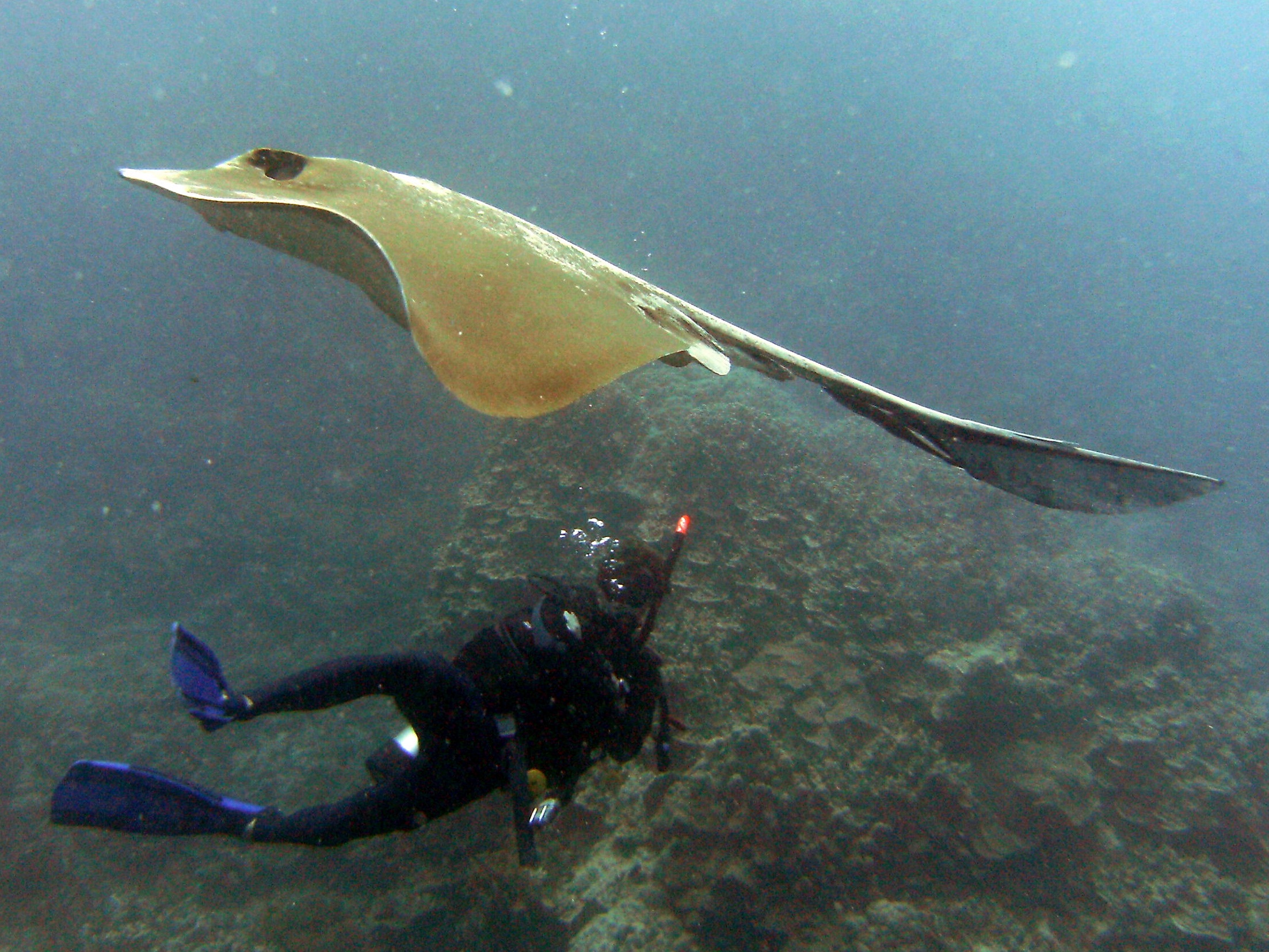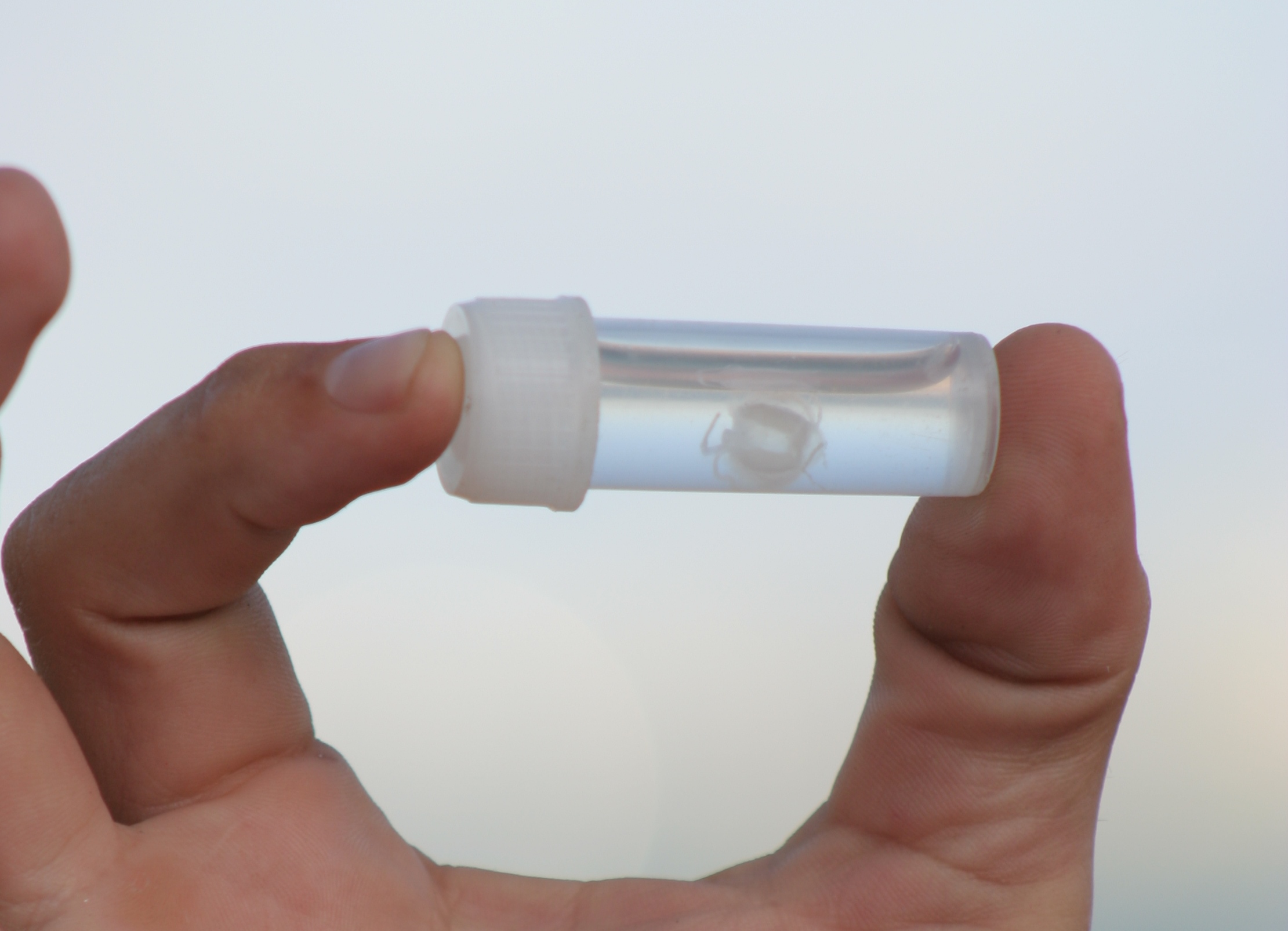Ten Things That Can Kill You on an Australian Beach
Australia is renowned for its beautiful beaches and also well-known for their dangers. But did you have any idea just how many things can kill you on an Australian Beach?
Going to the beach in Australia is really an adventure not to be taken lightly, it's a risky endeavour for the truly brave or, some may say, fool-hardy. So what exactly are the risks and what measures can you take to avoid getting killed on an Australian Beach?
Image credit
This calendar is available from Calendars.com
Australia's Beaches
We're Surrounded By Them!
As the world’s largest island nation, Australia is literally surrounded by beaches. A few facts for those who don’t really appreciate the scale of Australia’s beach situation. The length of Australia’s coastline is 35,877 kilometres (22,293 miles)*. But that’s just the mainland and Tasmania. There are also numerous islands which lie just off the coast of Australia. Some of the better known of these include Fraser, Moreton, Stradbroke, Bribie, King, Kangaroo, Rottnest and Lord Howe. The combined length of all the islands’ coastlines actually makes up 40% of the total length of 59,736 kilometres (37,118 miles)*! Now that’s a lot of scope for risky business.
So just what exactly are these deadly risks on Australian Beaches? Well,
despite what the book shown here might get you thinking, it’s not
masses of wild women you have worry about – although some of the
characters in this book might give you cause for concern…..
*Source
Sharks
Let's Start With These Guys
 |
| Sharks 2019 Wall Calendar |
There are a few steps you can take to reduce the risk of being attacked by a shark on an Australian beach which include swimming at beaches which are patrolled by Surf Life Saving Australia volunteers. See other ways you can minimise your risk at Avoid Shark Attacks
Just take a look at some of the beautiful, and totally harmless sharks you may get to share a swim at the beach with.
 |
| By Mfield, Matthew Field, www.photography.mattfield.com (Own work) CC BY-SA 3.0 or GFDL, via Wikimedia Commons |
Learn More About Sharks
Discover Ways to get an Up Close Experience With Sharks
Want to find out more about diving with sharks? This is the book for you.
Shark Repellent
Great for all Beach Water Activities Such as Scuba Diving, Swimming, Surfing, Snorkeling

If
getting in the water where sharks are known to visit makes you nervous
then you may wish to consider using an electronic shark repeller. Scuba
divers who dive regularly love the Shark Shield because it is
compact, versatile and light weight.
The Freedom 7 has an effective range of about 8 meters in diameter and
works by interfering with the Sense Organs of all shark species but
works most effectively on larger sharks.
This personal shark deterrent system is designed for all water sports so
whether you like to sea kayak or kite-surf, body-board or just enjoy
body-surfing this will give additional peace of mind while enjoying your
preferred leisure activity.
Box Jellyfish
The 'Suckerpunch' of the Sea
 |
| Avispa marina by Mithril CC BY-SA 2.0 |
Despite its nasty reputation, the number of deaths resulting from a sting from a box jellyfish are actually quite small. There have been 64 deaths recorded in Australian territories since 1883.
Best way to avoid an encounter with a box jelly?
Avoid any beach in the blue zone.
Really want to visit beaches in the blue zone?
Then stay away between October and May.
So you just have to visit during this period?
Then take a large bottle of vinegar with you and this isn’t for having with your fish and chips. Vinegar has been found to be the only reliable treatment for neutralizing the venom from box jellyfish stings so have plenty on hand. And don’t forget your panty-hose!
Image credit
Crocodiles
Another Reason to Stay Away from Northern Australia!
Saltwater Crocodiles tend to live mainly in brackish estuaries but they are excellent swimmers and will often venture out into open sea. Areas of beaches which are close to the mouth of an estuary are especially risky. In October 2004, a Queensland woman jumped on the back of a 14 foot saltie that was dragging a camping companion from his tent. Read the full story
To reduce your risk of attack by a saltwater crocodile you should heed these warnings:-
1. If you see a sign warning of crocodiles in the area DON’T EVEN THINK OF GOING IN THE WATER!
2. Just because there’s no sign, don’t think you are safe.
3. If you are in a small boat in any coastal waterway in Northern Australia, don’t dangle any part of your body in the water
4. Don’t throw food scraps in the water.
5. Don’t camp near the water’s edge.
6. Be particularly careful during breeding season, May to September, when crocs are at their most aggressive.
The campaign for public awareness is active and on-going especially in areas where visitors from other countries, who are less likely to be familiar with the risks, are more likely to visit. Realistically, there are only around one to two deaths recorded each year. This number could be higher as deaths occasionally occur within the Aboriginal Arnhem Land area which can sometimes go unreported.
Click here to see the Saltwater Crocodile’s range.
Blue-Ringed Octopus
Don't Go Poking Around Where You Shouldn't
 | |||
| Blue-ring Octopus by gentlehorizons CC BY-NC-SA |
To avoid being bitten by a blue-ringed octopus don’t poke around in tide pools and if you do see one don’t try to pick it up.
Image used under a Creative Commons licence from gentlehorizons on flickr
Rock-Fishing
Yes! Fishing Off Rocks is Dangerous!
“According to Surf Life Saving Australia’s 2009 Coastal Report, there were 94 drownings on the coast of Australia, for the year to July 2009. Of those deaths 12 were related to fishing. The Randwick Council area in Sydney NSW, is the National black spot for rock fishing deaths, with 10 in the past 5 years.”*
If you are going to participate in rock fishing follow these safety rules:-
1. If the weather is rough don’t go!
2. Wear a life vest
3. Don’t go alone. Always fish with a buddy.
4. Wear light-weight clothing. If you do fall in heavy clothes will weigh you down.
5. Wear shoes that are suited to the rock conditions
6. Have an emergency kit which includes a rope with a float, a first aid kit and consider a thermal blanket
In 1990, someone I knew, we shared a close friend, was killed while rock fishing. It’s real. It happens.
*Source
Dangerous Rock Fishing
This Bloke has a Death Wish!
The second video gives full safety tips for anyone considering rock fishing.
Rock Fishing Sydney Deadliest Sport Down Underby bragnrelease
Surf Conditions
Don't Let The Sea Get the Better of You
 |
| By cheetah100 from Auckland, New Zealand (Flickr) CC BY 2.0 or CC BY 2.0, via Wikimedia Commons |
But there are rules that must be observed for your own personal safety. If you’re not a strong swimmer you need to be especially careful. Drownings occur on Australian beaches every year.
You should always swim at a beach which is patrolled by life savers or life guards. These beaches will have a designated safe area for swimming marked by flags. Always swim between the flags.
The area outside of the flags may have risks that aren’t apparent to anyone unfamiliar with surf conditions.
There can be rips which are currents that pull you along and are difficult to swim away from. There can be undertows which can drag you out to sea. There can be shifting sandbars and sudden drop-offs that make the water depth unpredictable and before you know it you are out of your depth. People die ever year through drowning at Australian beaches. Don’t under-estimate the dangers.
Image credit
Stonefish
Watch Where You Step
 |
| Stone Fish |
The only way to avoid a Stone-fish sting is to always watch where you step. Protective footwear can also help to prevent a sting from a stone fish.
Image credit
Sting Rays
Don't Like to be Cornered
 |
| Sting ray and diver |
It may surprise some to learn that these “Sea Angels” can in fact be deadly. Australia’s wildlife warrior Steve Irwin, better known to some as The Crocodile Hunter, was killed by a sting-ray while filming a documentary called ‘Ocean’s Deadliest’. As Irwin approached the ray it turned and flicked its barbed tail into his chest.
This is a rare occurrence and most encounters with stingrays result in minor though painful injury.
Image credit
Sea Snakes
Lethal Toxic Venom
 |
| Sea snake |
There are four species of sea snake in Australian waters and all are considered highly venomous however no deaths have been recorded in Australia from Sea Snakes.
Image credit
Irukandji
Small, Silent, Deadly
 |
| Irukandji |
Like the Box Jellyfish, the best defence against Irukandji sndrome is total avoidance but if that’s not possible the same treatment applies. Two deaths have been attributed to Irukandji syndrome in Australia.
Image credit
*Source
Reader Reviews
-
poemsthatdance
Jan 19, 2014 @ 7:58 am
We have a few dangerous animals where I live in Darwin Australia but I never really thought about them until I moved away to Europe for a few years and then returned. It becomes a way of life and I suppose I know instinctively how to look after myself. I never swim in the sea. The tourists seem to generally take the most risks. So yep, good to be aware! -
Steph_Tietjen Aug 30, 2013 @ 8:58 pmI"d love to visit Australia and these beaches but would forego the swimming--that Irukandji scares me the most--perhaps because I wouldn't be able to see it. Interesting and informative lens. Thanks
-
vikksimmons Mar 27, 2013 @ 11:13 amFull of information about the dangers. Better to be aware. I've heard about some of these problems but a few are new to me. Don't think I'd really like to meet up with any of them. We have alligators that have wandered into a few suburban streets and I've read of the jelly fish hitting Galveston's beaches.
-
MaggiePowell Mar 26, 2013 @ 5:03 pmI've been to Australia, and swum in the ocean from Sydney to Rockhampton.... I was sort of aware of the dangers... now I'm terrified!
But I will still go back. -
i-Dia- Mar 24, 2013 @ 11:52 amI have never been to Australia and if I ever go I would love to see these beautiful beaches. I would, however, stay out of the water after reading this. Very informative.
-
whiteskyline Mar 24, 2013 @ 7:44 amI was there years ago and will always remember when the water looked silver, as the sun was setting being told not to go out there. I think that is when the reality of sharks hit me. It's funny how something like that leaves an impression, since I still remember it, and think I was more fascinated than scared, though I definitely wasn't going swimming :)
-
Pitaya Mar 24, 2013 @ 12:24 amI vividly remember a Queensland holiday when I was a little girl that almost involved an encounter with a croc. It seemed exciting at the time but I imagine my parents must have been terrified!
-
CatJB Mar 23, 2013 @ 10:21 pmEek! I do know all this as I live in Australia, but to see it all laid out like that. I will NOT show my children, as we're heading to QLD later this year and they already remember their cousin getting stung by a bluebottle last time we were there.....
-
lisadh Mar 23, 2013 @ 2:39 pmYikes! This makes Australian beaches sound terrifying. But you haven't scared me off - scuba diving in Australia is still on my bucket list. :-)
-
gottaloveit Mar 23, 2013 @ 12:38 pmI got nailed by a jellyfish in Key West last year - I think it might have been a box jelly variety. Made me sick as a dog - physically. The sting wasn't the worst; it was the 3 days of nausea and vomiting. Ugh.






1 comment:
Australia sounds like a dangerous place, from the women to the stingrays... but I've seen photos of the beaches there covered with people so apparently many are willing to face the risks.
Post a Comment